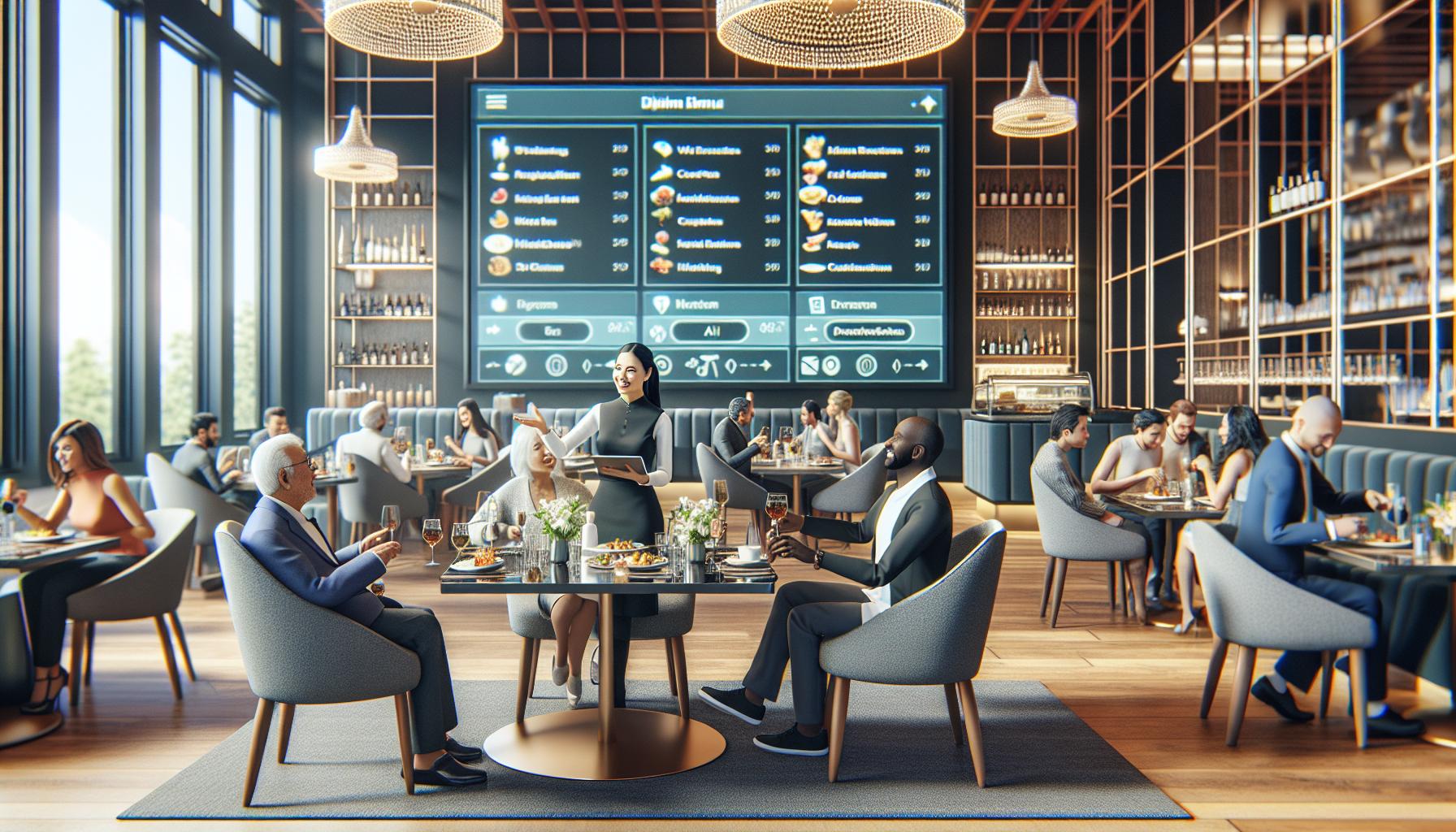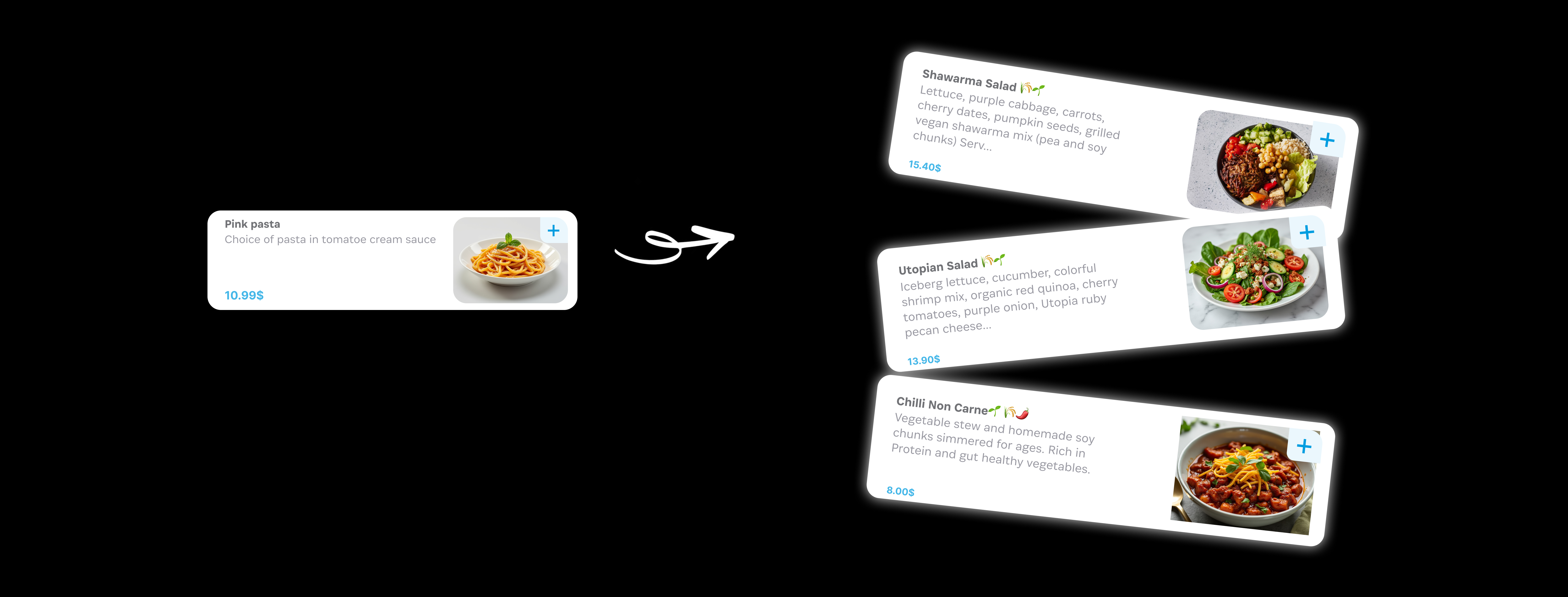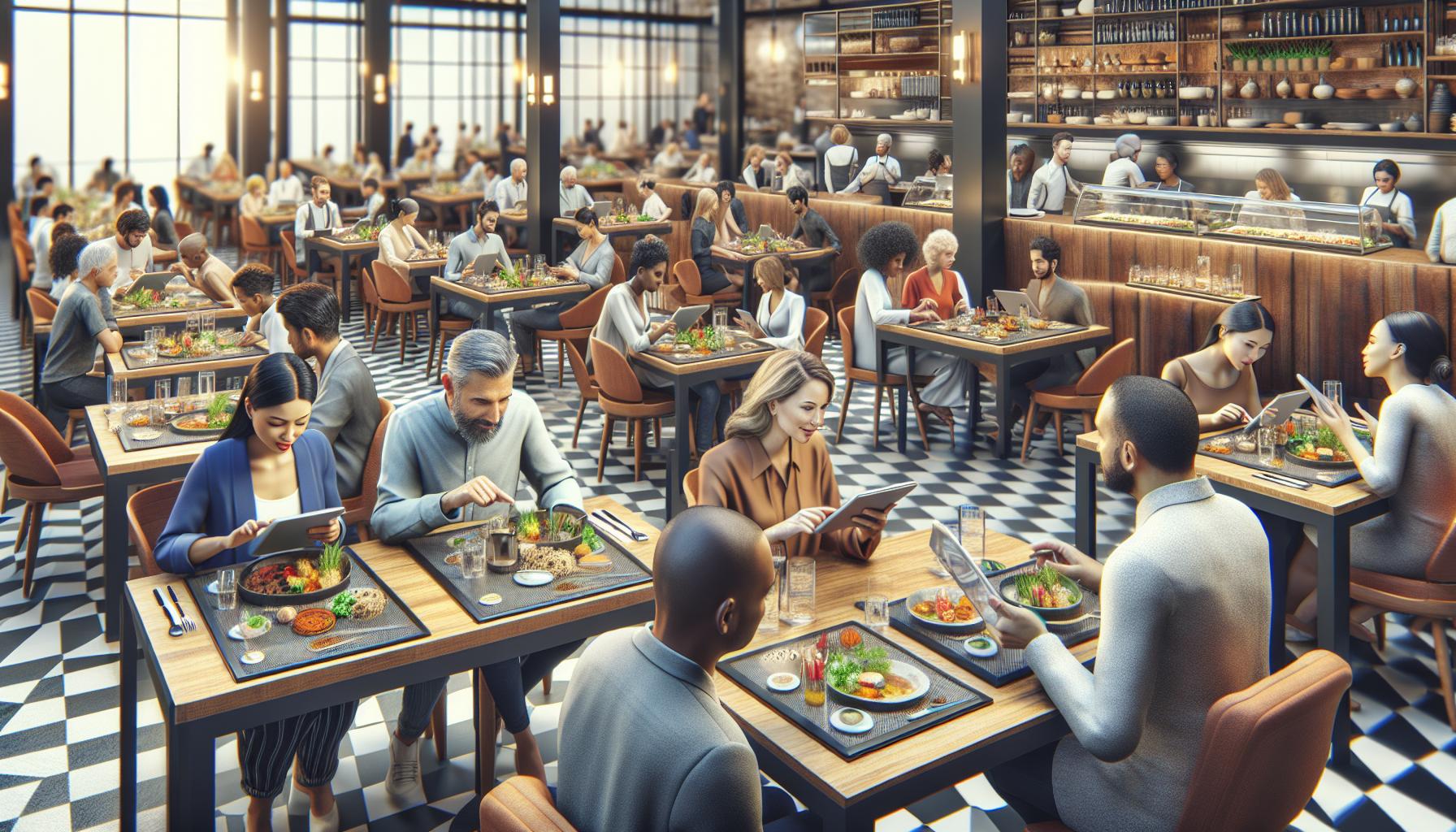How AI Improves Menu Descriptions: Enhance Diner Experience & Boost Sales
Menu Mojo•September 24, 2024 • 8 min read | 1501 words

Ever found yourself drooling over a menu description before even seeing the dish? That's the magic of well-crafted words, and now, artificial intelligence is stepping up to the plate. With AI, restaurants can transform bland menu descriptions into mouth-watering narratives that entice diners and boost sales.
I’ve seen firsthand how AI-driven language models analyze customer preferences and culinary trends to create descriptions that resonate. By using AI, restaurants can ensure their menus are not only informative but also captivating, making every dish sound like a must-try experience.
What is AI in Menu Descriptions?
AI in menu descriptions refers to the use of artificial intelligence to craft engaging and effective descriptions for restaurant menus. By harnessing data from customer interactions and culinary trends, AI tailors descriptions to appeal to diverse diners.
Here you can see the lazy example of a boring descrption, and the dishes that have been optimized using menumojos AI with www.themenumojo.com

Personalized Optimization
AI customizes menu descriptions based on individual preferences. By analyzing past orders and feedback, AI generates text that resonates with specific customer segments. For example, AI might highlight vegan-friendly ingredients for health-conscious customers.
SEO Recommendations
AI incorporates SEO best practices into menu descriptions. It suggests keywords that improve online visibility, helping restaurants appear in search results. For example, including phrases like "best pasta in New York" can attract more traffic to the restaurant's website.
Dish-specific Keywords
AI identifies and utilizes dish-specific keywords that appeal to search engines and diners. By focusing on unique ingredients and cooking methods, AI makes each dish stand out. For example, a description might mention "locally sourced heirloom tomatoes" to draw attention.
Automation for Menu Updates
AI automates the process of updating menu descriptions. Whenever there are changes in menu items or ingredients, AI swiftly revises the content. This ensures that descriptions remain accurate and appealing without manual intervention. By doing this, restaurants can maintain an updated and consistent menu effortlessly.
Benefits of AI for Menu Descriptions

AI technology offers several advantages for refining menu descriptions, making them more appealing and effective in numerous ways.
Enhanced Customer Experience
AI enhances the customer experience by personalizing menu descriptions. It tailors content to resonate with individual preferences by analyzing past dining choices. For example, if a customer frequently orders vegan dishes, AI-generated menus highlight plant-based options prominently. Personalized descriptions make diners feel understood and valued, increasing their satisfaction and loyalty.
Data-Driven Insights
AI provides data-driven insights into customer behavior and preferences. It aggregates data from various interactions and identifies patterns, helping restaurants understand what appeals to their customers. These insights inform menu adjustments, ensuring offerings align with customer expectations. For instance, if data shows a high preference for spicy foods, the menu can feature more of these options with appealing descriptions that emphasize spice levels and flavors.
Real-Time Updates and Customization
AI allows real-time updates and customization of menu descriptions. Restaurants can keep their menus current without manual effort. If an ingredient is unavailable, AI instantly adjusts the description. Customers get accurate information, reducing dissatisfaction from unavailable dishes. Real-time updates ensure the menu remains relevant and engaging, reflecting seasonal changes or special promotions.
Personalized Optimization
AI optimizes menu descriptions by analyzing individual diner profiles. It customizes text to match tastes and dietary restrictions. A regular customer who prefers gluten-free options sees these prominently featured in their personalized menu. This level of detail helps make the dining experience seamless and enjoyable.
SEO Recommendations
AI incorporates SEO best practices into menu descriptions. It identifies and integrates high-value keywords that improve online visibility. Restaurants benefit from increased traffic to their websites and online menus. For example, a well-optimized description for "vegan lasagna" increases the likelihood of attracting diners searching for vegan options in search engines.
Dish-Specific Keywords
AI identifies dish-specific keywords that make individual menu items stand out. These keywords highlight unique aspects of each dish, such as "slow-cooked," "locally sourced," or "artisan." Incorporating such terms helps attract diners looking for specific qualities in their meals. Highlighting these unique features boosts the appeal and perceived value of the dishes.
Automation for Menu Updates
AI automates the process of updating menu descriptions, ensuring consistency and accuracy. When seasonal dishes are added or removed, AI handles the adjustments seamlessly. This automation saves time and reduces errors. Restaurants maintain a fresh and appealing menu without the usual manual workload involved in frequent updates.
Challenges and Considerations
Leveraging AI to improve menu descriptions presents several challenges and considerations. Addressing these factors ensures the successful implementation of AI-driven strategies in the restaurant industry.
Data Privacy Concerns
AI systems handle extensive customer data to personalize menu descriptions. Protecting this data is crucial. Ensuring compliance with data protection regulations like GDPR and CCPA is essential to safeguard customer information. Implementing rigorous data encryption and anonymization protocols reduces the risk of breaches. For example, encrypting customer data ensures it's secure even if intercepted.
Initial Investment and Maintenance
Implementing AI in menu descriptions requires substantial initial investment. Costs include purchasing software, integrating systems, and training staff. Ongoing maintenance like software updates and technical support also incurs expenses. Evaluating the return on investment is critical to justify these costs. For instance, comparing the increase in sales to AI implementation costs helps determine financial viability.
Personalized Optimization
AI enhances customer experience by personalizing menu descriptions based on preferences. Customizing descriptions for vegans, vegetarians, or other dietary requirements increases satisfaction and loyalty. Incorporating customer behavior data ensures menus resonate with diners. For example, highlighting gluten-free options for customers with gluten intolerance makes the menu more appealing.
SEO Recommendations
AI-driven menus incorporate SEO best practices to improve online visibility. Using relevant keywords in descriptions helps attract diners searching for specific dishes. For instance, including "organic" or "locally-sourced" keywords grabs the attention of eco-conscious diners. This strategy boosts discoverability on search engines.
Dish-Specific Keywords
AI identifies dish-specific keywords that make menu items stand out. Highlighting unique ingredients or preparation methods enhances appeal. For instance, describing a dish as "wood-fired" or "handmade" emphasizes quality and craftsmanship.
Automation for Menu Updates
AI automates menu updates with MenuMojo, ensuring accuracy and relevance without manual intervention. This feature is especially useful when ingredients change or seasonal promotions arise. Automation reduces errors and saves time. For example, automatically updating a menu to reflect seasonal ingredients ensures offerings are always current and enticing.
The Future of AI in Menu Descriptions
AI's role in transforming menu descriptions is just the beginning. Restaurants that embrace AI will not only stay ahead of culinary trends but also cater to the unique tastes and preferences of their customers with unprecedented precision.
By leveraging AI, restaurants can ensure their menus remain dynamic, engaging, and highly relevant. This technology will continue to shape how we perceive and interact with food, making every dining experience more personalized and enjoyable. The future of AI in menu descriptions is bright, promising a new era of culinary creativity and customer satisfaction.